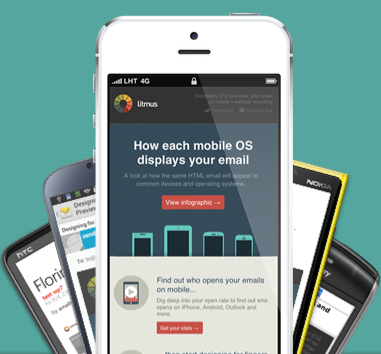
7 email testing and delivery tools for a biz on a budget
Editor’s note: VerticalResponse recently announced the launch of Test Kit, which allows users to automatically preview and test emails in a few clicks — eliminating the need for an external testing and delivery service. Read more about Test Kit here and and here.
You hear so many rumors about what you can or can’t include in your email if you don’t want it to land in spam. But a lot of those are exactly that, rumors.
Using an ESP like VerticalResponse is an excellent start to ensuring inbox placement, but spam filters look for various things in emails to determine where they end up. Are there too many links in your email? Did you use the word “Free” one too many times? To help dispel the myths, we put some email testing and delivery tools to the test using the same HTML code and subject line from one of our recent newsletters. Here’s what we discovered:
PutsMail
PutsMail is a basic testing application, but you can get some good information about your HTML using this tool. First, they send you a test of your email, so you can see it in your inbox. If you’re using an ESP, you probably have this feature already, but if you don’t, it allows you to see your how your email will appear in the inbox of your choice. Then the tool goes through your code and detects if there’s anything that could cause an issue and what that might be. Our newsletter checked out okay, though anyone using Lotus Notes or Eudora may have some issues with the CSS that was included. CSS is something that can be tricky in different email programs; if you’re using CSS, be sure to keep it inline to ensure it will work across a variety email programs.
Email on Acid
We’re fans of this tool because of the various email program display views. It’s always important to know how things will appear for all of your readers and the different programs they use. Email on Acid offers a free version that shows what your email looks like in Gmail and Outlook 2003, plus they take a look at your HTML and let you know if there are any issues. The paid versions offer more inbox examples, more analysis, and check for spam filter triggers. Our newsletter looked great with the free trial test on these two programs, but as we learned from the previous tool, there could be some rendering issues on older email programs.
Email Reach
Email Reach takes a different approach to testing emails by providing a seed list of addresses to test. The nice thing about this service is that they can test email programs around the world and on mobile. You just need to download the list they provide, upload to your ESP and then send test emails to that seed list. They’ll give you reporting on how your email works in all the different accounts that they monitor. They offer a 24-hour free trial and then a paid version once that expires. They also check for spam folder placement and will analyze content and HTML for possible spam problems.
Lyris ContentChecker
If you’re worried about specific content that could cause your email to land in the spam folder, this is the free tool for you. Lyris checks the HTML and the content of your email and gives you score based on where the email will end up. Zero is the best, anything over 3.0 and they recommend changing your content to help ensure your email doesn’t get marked as spam. They’re checking through SpamAssassin, a very popular spam filter, for anything that is usually associated with spam. Their website gives you a quick analysis and then they send an email with more info and links to help you understand email delivery and how you can improve yours. Our newsletter got a zero; we like to practice what we preach!
Litmus
Much like Email on Acid, Litmus offers a limited free test and a paid version with more bells and whistles. The free test covers pretty much any email program your readers could be using, plus mobile ones. While the other tests are done in seconds, this one takes awhile, but for free we were willing to wait a bit. There is also a subject line checker, to see how your From label and subject line will look in different email programs, landing page links and again, HTML analysis. There is one test per email address, but the paid version allows unlimited testing for all the features mentioned. As with the test on Puts Mail, our CSS was trouble but otherwise the email looked good.
Email Spam Test
Email Spam Test is another free tool that provides you information about whether your email may go to a spam folder. They don’t provide much detail, but if there was a potential issue with your code or content they let you know. Our newsletter did fine, although they weren’t sure about the subject line. When we actually sent this newsletter, the subject line performed on target and our opens/clicks stats were right on the mark.
Postmark
This is also a free spam test, but it requires a bit more info than you may have. Not only do you need to paste in the HTML from your email, but you also need to include the full headers as well. It makes for a much more thorough test but also more time consuming. Just like Lyris, they’ll give you your SpamAssassin score and let you know how close to spam your email is.
There are many applications out there to test your email; these are just a few to get you started. Continue to test different things with your email and content especially if you find any problems getting delivered to the inbox.
Join 140,000 small business owners
© 2013 – 2018, Contributing Author. All rights reserved.

 SUBSCRIBE
SUBSCRIBE 


